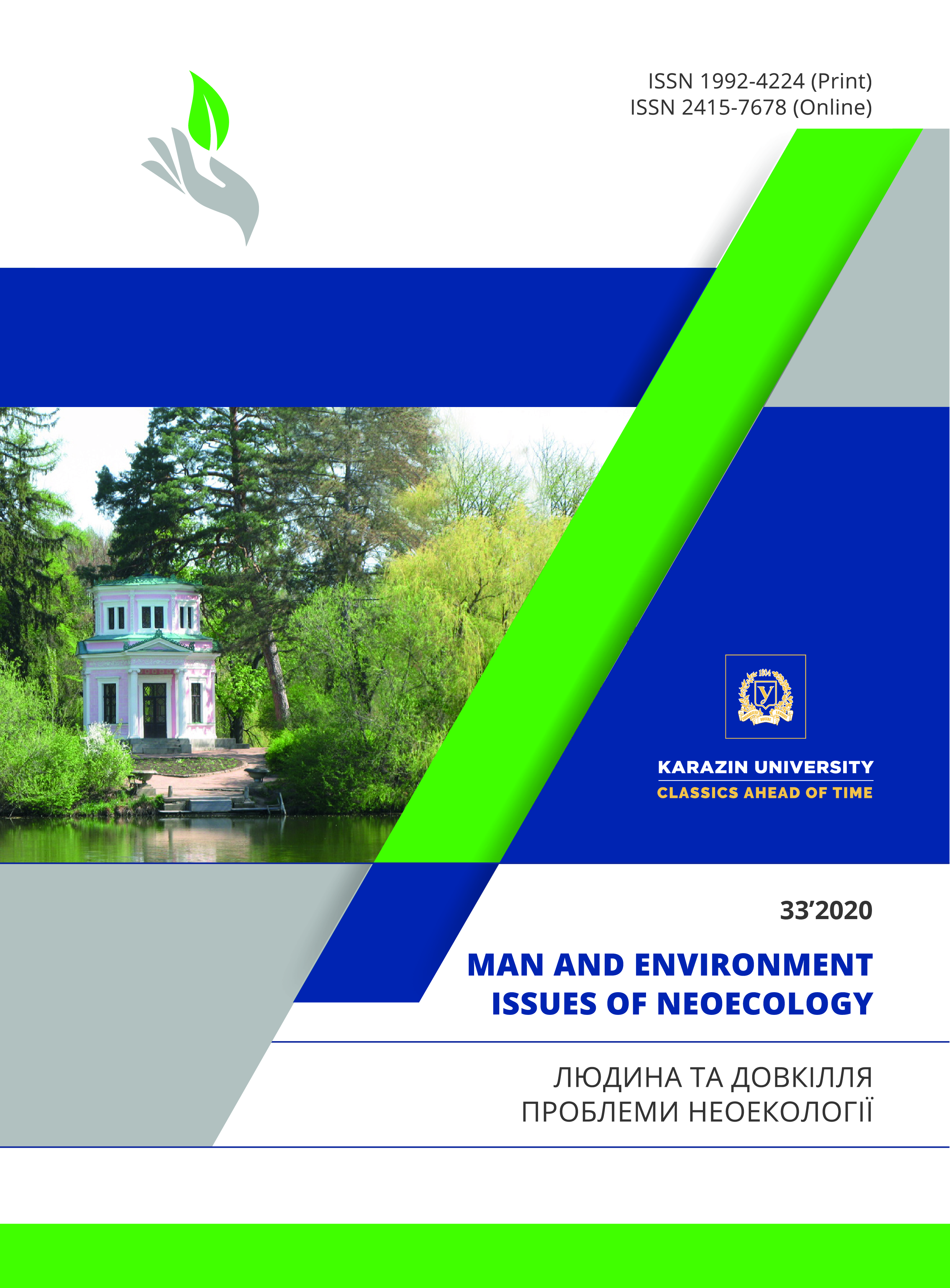The Environmental Kuznets Curve: Industrial Application For Forecasting Waste Generation And Emissions Of Harmful Substances
Abstract
Purpose. To determine sustainable development conditions according to the criteria of emissions of harmful substances and waste generation when modelling impact factors of the parameters and general environmental situation in Ukraine.
Methods. In the research general scientific (analysis and synthesis, induction and deduction, analytical grouping) and special (abstraction, modelling, etc.) methods of studying economic phenomena and processes have been used.
Results. For modelling of national sustainable development parameters by the parameters of emissions of harmful substances and waste generation it has been proposed to apply sectoral approach and the model of the environmental Kuznets curve (EKC). It has been proved that the EKC model should be used not only to model parameters of emissions of harmful substances, but also for waste generation. Besides, it has been proved that it is necessary to take into account not only national level indicators, but also the contribution of the leading sectors driving national economy. Modelling has been carried out for the following industries: processing; mining and quarry development; agriculture, forestry and fisheries; supply of electricity, gas, steam and conditioned air; transport, warehousing, post and courier services. The models are based on correlation between GDP, average nominal income per capita, environmental costs, waste generation and emissions of harmful substances at the national level and by its leading industries. It has been determined that reaching the "turning point" on sectoral EKCs correlates waste generation and emissions with industry`s rate of remuneration, value added (sectoral GDP) and sectoral investment in environmental protection in the context of industry`s specifics. It has been demonstrated that in Ukraine the "turning point" on the EKC has been provided by 20% of economically active population in industries that generate 46% of emissions amid country's average nominal income per employee and steady growth of environmental expenses for at least two years.
Conclusions. It has been proved that the EKC for Ukraine should be analyzed by the sectors of national economy. To form effective national environmental policy, sectoral EKCs should be applied to determine emissions of harmful substances and waste generation. It has been determined that the key factor to ensure country`s sustainable development is environmental investment both at the national level and by its driving economic sectors. Thus, the sectoral EKC reflects the progress towards industries` sustainable development that form main revenue receipts of the government and determine the rate of remuneration in the real sector. Modelling of the EKC parameters for waste and emissions of harmful substances fully corresponds to the trends of sustainable economic growth and its transition to the innovative type of development.
Downloads
References
Decree of the President of Ukraine «On the Strategy of Sustainable Development «Ukraine-2020». (2015). URL: http://zakon5.rada.gov.ua/laws/show/5/2015 (in Ukrainian).
Shubravska, O. V. (2005). Steady economic development: concept and direction of research. Economy of Ukraine, (1), 36-42 (in Ukrainian).
Alimov, O. M., Danilenko, A. I., Tregobchuk, V. M. & others. (2005). Economic development of Ukraine: institucional'ne and resource providing. Kyiv: the Incorporated institute of economy of NAN of Ukraine (in Ukrainian).
Khvesik, M. (2011) Staliy development of Ukraine: problems and prospects. Economist, 4, 8-9.
Khlobystov, Ie., Horoshkova, L., Kozmenko, S., Trofymchuk, V. (2019). Econometric analysis of National Economy Sustainable Development on the basis of the Еnvironmental Kuznets curve. International Journal of Global Environmental Issues. Special Issue on: "Green Economy: Energy, Industry and Agricultural Aspects". in print.
Horoshkova, L. A, Khlobistov, Ie. V. & Trofimchuk, V. O. (2019). The relationship between economic growth and the assimilation potential of the environment in ensuring the sustainable development of the national economy. Project management and production development, (1(69)), 24-37. Retrieved from http://www.pmdp.org.ua/images/Journal/69/3.pdf (in Ukrainian).
Horoshkova, L. A., Khlobistov, Ie. V. & Trofimchuk, V. O. (2019). Economic and statistical modeling of determinants of the dynamics of environmental pollution in Ukraine. Economics and organization of management, (2 (34)), 46-55. Retrieved from http://jeou.donnu.edu.ua/article/view/7350 (in Ukrainian).
Horoshkova, L. A., Khlobistov, Ie. V. & Trofimchuk, V. O. (2018). Financial mechanisms of sustainable use of territorial resources of natural economic systems. Theoretical and practical aspects of economics and intellectual property: a collection of scientific papers, (18), 275-284. Retrieved from http://nbuv.gov.ua/UJRN/Tpaeiv_2018_18_39 (in Ukrainian).
Mishchenko, V. S., Vyhovska, G. P., Makovetska, Yu. M. & Omelyanenko, T. L. (2012). Improving the waste management system in Ukraine in the context of European experience. Кyiv: Lazurit-Poligraf (in Ukrainian).
Authors reserve the right of attribution for the submitted manuscript, while transferring to the Journal the right to publish the article under the Creative Commons Attribution License 4.0 International (CC BY 4.0). This license allows free distribution of the published work under the condition of proper attribution of the original authors and the initial publication source (i.e. the Journal)
Authors have the right to enter into separate agreements for additional non-exclusive distribution of the work in the form it was published in the Journal (such as publishing the article on the institutional website or as a part of a monograph), provided the original publication in this Journal is properly referenced
The Journal allows and encourages online publication of the manuscripts (such as on personal web pages), even when such a manuscript is still under editorial consideration, since it allows for a productive scientific discussion and better citation dynamics (see The Effect of Open Access).





